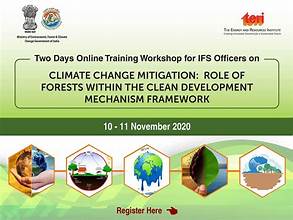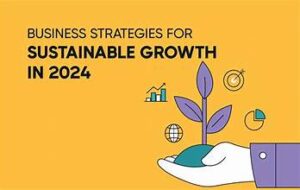
Introduction
As we progress through 2024, the importance of sustainable economic practices becomes increasingly evident. Among these practices, forest-based economies stand out as a promising avenue for fostering both economic development and environmental stewardship. Forests play a pivotal role in global ecosystems and have the potential to drive sustainable growth through innovative strategies. This article explores how harnessing the power of forest-based economies can lead to sustainable development, focusing on current trends, strategies, and future outlooks.
The Importance of Forest-Based Economies
Forest-based economies encompass a range of activities that utilize forest resources for economic gain while ensuring the conservation and sustainability of these natural assets. These economies not only provide essential resources such as timber and non-timber forest products but also contribute significantly to local and national economies through employment and trade.
Economic Benefits
- Employment Opportunities: Forest-based industries create jobs in forestry, logging, and the processing of forest products. This employment is crucial in rural areas where alternative job opportunities may be limited.
- Revenue Generation: Timber, paper, and other forest products generate significant revenue. Sustainable management of forests ensures that these resources can be used for economic gain without depleting them.
- Tourism and Recreation: Forests attract tourists and outdoor enthusiasts, contributing to the local economy through eco-tourism, recreational activities, and related services.
Innovative Strategies for Sustainable Growth
To maximize the potential of forest-based economies while ensuring their sustainability, several innovative strategies are being implemented. These strategies focus on balancing economic growth with environmental conservation.
1. Sustainable Forestry Practices
Sustainable forestry involves managing forest resources in a way that meets current needs without compromising the ability of future generations to meet their own needs. Key practices include:
- Selective Logging: This method involves harvesting only specific trees, leaving the forest largely intact. It reduces the impact on the ecosystem compared to clear-cutting.
- Agroforestry: Integrating trees and shrubs into agricultural systems can enhance productivity and biodiversity. Agroforestry practices, such as planting trees on farm edges or in alley cropping systems, can provide additional income sources while preserving forest cover.
- Reforestation and Afforestation: Replanting trees in deforested areas (reforestation) or planting trees in non-forested areas (afforestation) helps restore degraded lands and increase forest cover.
2. Non-Timber Forest Products (NTFPs)
NTFPs include a variety of products such as fruits, nuts, medicinal plants, and resins that are harvested from forests without cutting down trees. These products offer significant economic opportunities and contribute to forest conservation. Examples of NTFPs include:
- Medicinal Plants: Forests are a rich source of medicinal plants that can be used for pharmaceuticals and natural remedies.
- Edible Plants and Mushrooms: Many edible plants and mushrooms are harvested from forests and have high market value.
- Crafts and Resins: Forest-based crafts and resins, such as maple syrup and pine resin, provide income for local communities.
3. Forest Certification and Eco-Labeling
Forest certification systems, such as those provided by the Forest Stewardship Council (FSC) and the Programme for the Endorsement of Forest Certification (PEFC), ensure that forest products are sourced from sustainably managed forests. Eco-labeling helps consumers make informed choices and supports sustainable practices. Benefits of forest certification include:
- Market Access: Certified products often have better market access and higher prices.
- Consumer Trust: Eco-labels build consumer trust by demonstrating commitment to environmental and social standards.
- Forest Management: Certification encourages improved forest management practices and transparency.
4. Community-Based Forest Management (CBFM)
CBFM involves local communities in the management and conservation of forest resources. This approach empowers communities, fosters local stewardship, and promotes sustainable practices. Key aspects of CBFM include:
- Local Involvement: Engaging local communities in decision-making and management processes ensures that forest use aligns with their needs and values.
- Benefit Sharing: Sharing the benefits of forest resources with local communities helps to create economic incentives for conservation.
- Capacity Building: Providing training and resources to local communities enhances their ability to manage forests sustainably.
5. Technological Innovations
Technology plays a crucial role in enhancing the efficiency and sustainability of forest-based economies. Innovations include:
- Remote Sensing and GIS: These technologies help monitor forest health, track deforestation, and plan sustainable management practices.
- Drones: Drones can be used for mapping, monitoring, and managing forests, providing detailed data on forest conditions.
- Biomass Energy: Utilizing forest biomass for energy production can reduce reliance on fossil fuels and provide a sustainable energy source.
Future Outlook
As we look ahead, the potential for forest-based economies to contribute to sustainable growth is promising. Key trends shaping the future include:
- Increased Focus on Biodiversity: There is growing recognition of the importance of preserving biodiversity within forest ecosystems. Strategies that integrate biodiversity conservation with economic activities will be essential.
- Climate Change Mitigation: Forests play a critical role in sequestering carbon and mitigating climate change. Enhancing forest-based strategies for carbon sequestration will be a key focus.
- Global Collaboration: International cooperation and partnerships will be crucial for addressing global challenges related to forest management, trade, and conservation.
Conclusion
Harnessing the power of forest-based economies presents a unique opportunity for sustainable growth in 2024 and beyond. By implementing innovative strategies such as sustainable forestry practices, promoting non-timber forest products, leveraging certification and eco-labeling, supporting community-based management, and embracing technological innovations, we can achieve economic development while preserving our vital forest resources. The future of forest-based economies lies in balancing economic benefits with environmental stewardship, ensuring that forests continue to thrive for generations to come.


